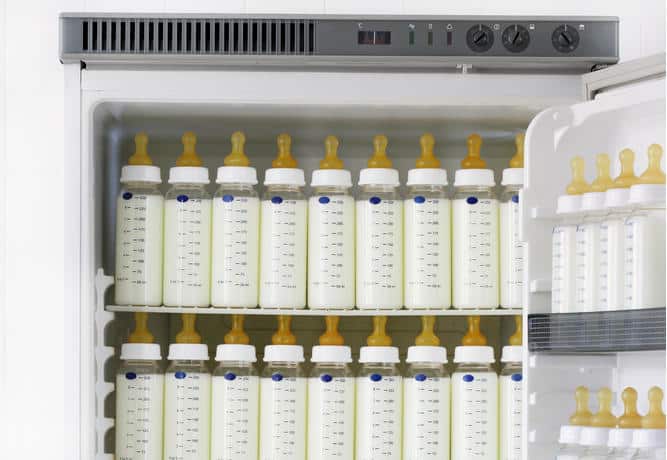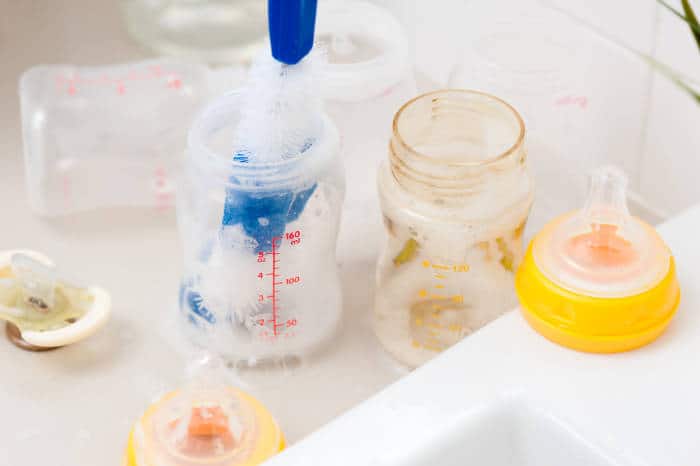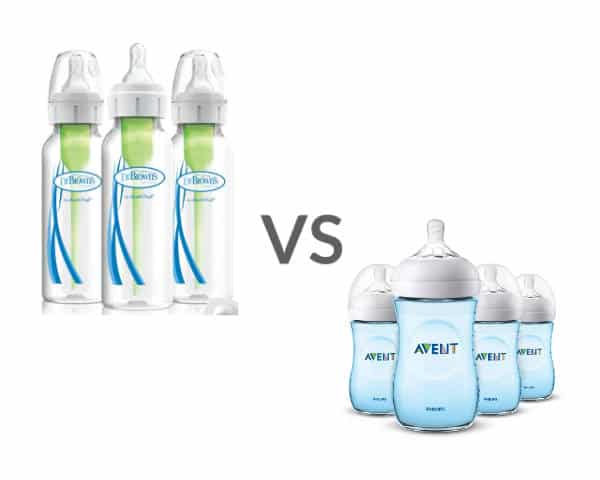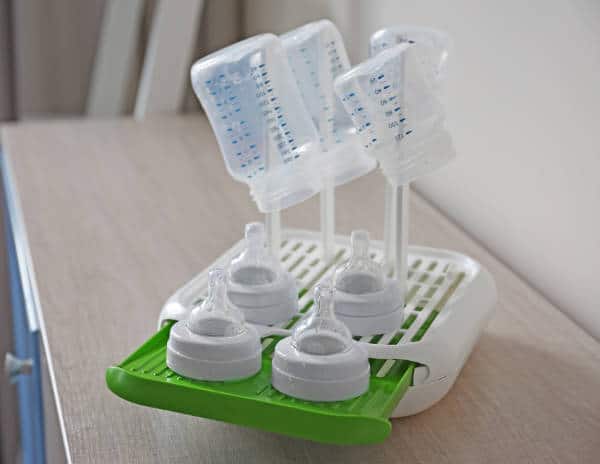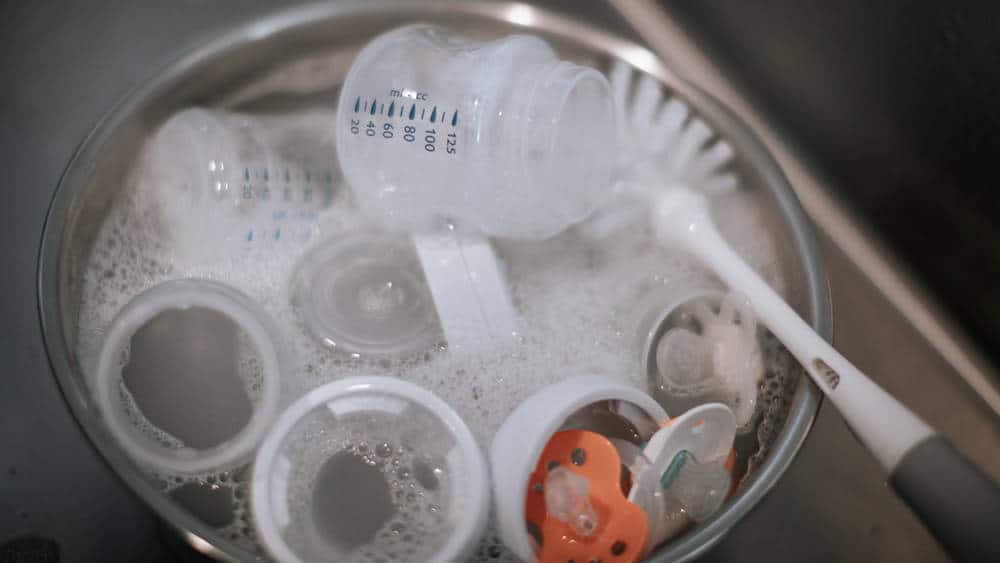If you’re a new mother, you’ve probably noticed that everyone is always touting the benefits of breastfeeding. From obstetricians to pediatricians and even the World Health Organization, breastfeeding is widely encouraged for the first 6 months of an infants life, and rightly so.
It’s one of the biggest boosts to overall health you can give your baby. But it doesn’t only benefit them, did you know it burns around 600 calories a day?
But… sometimes we run into challenges with breastfeeding and that’s perfectly OKAY!
You are not alone. Did you know…
Around 75% of infants are either combination fed, or given formula exclusively
*data for infants in the USA in their first 6 months of life born in 2017, from cdc.gov
The reason that percentage is so high? It’s because Moms face challenges like:
Low supply – around 45% of moms gave this as a reason for stopping
Breast milk does not satisfy their baby – 50% of moms gave this as a reason for stopping
Premature birth – only 16% of premature babies are breastfed when discharged from hospital
Health issues – like mom becoming sick (14%), baby being sick (6%)
Data from Pediatrics & LIFT study
All the above can contribute to a difficult breastfeeding relationship. It’s better to supplement than allow roadblocks to stand in the way of your child’s nutrition or your mental health. Other times, moms just need the flexibility that only formula can provide.
That’s why we’re here to ouline some of the pros and cons to combination feeding. It is an important puzzle piece to maintaining your baby’s nutrition.
Table of Contents
What is combination feeding?
Combination feeding is exactly as it sounds. It’s essentially feeding your baby a combination of breast milk and formula to meet their nutritional needs. Some also refer to this practice as “mixed feeding” or “breast and bottle”.
Why do women stop exclusively breastfeeding?
There are a lot of reasons for introducing the concept of mixed feeding and they often stem from difficulties with breastfeeding, social factors or the baby themselves. Things like:
- It’s tiring – 12%
- They just don’t like it – 7%
- Low milk supply – 45%
- Mastitis – thought to affect around 10% of US mothers
- Blocked ducts
- Sore/cracked nipples
- Oral thrush
- It’s inconvenient – 15.6%
- Public feeding can be still be stigmatised in some places – 11.6%
- You want your body, diet, time back!
- Work / life commitments
- Babies can start to bite (moreso as they reach 5-6 months of age) – 18%
- Babies just lose interest in breast milk – 32%
- Low baby birth weight – 12%
Data from AAFP and Pediatrics publication. Percentages indicate reasons mothers deemed as important for the cessation of breastfeeding (or exclusive breastfeeding) within the first 12 months.
Why isn’t it encouraged to feed this way?
Ideally, professionals would like to see exclusive breastfeeding for at least the first 6 months up to a year. Many fear that encouraging combination feeding is inadvertently encouraging the mother to stop breastfeeding.
In terms of lactation, mixed feeding can contribute to less supply and exacerbate the issue if you’re already struggling to bring in more milk. The reason being, less nursing equals less supply. So, if you aren’t stimulating the breast when you are supplementing with formula, you can actually worsen the issue.
Most experts recommend doing your best to establish a steady breastfeeding relationship (if possible) before moving to combination feeding. Not only does this help your milk come in, but it also gives your baby’s gut health a dose of the good microbes within your milk.
The health benefits of breastfeeding outweigh that of formula because of the beneficial bacteria within the liquid. It contributes to a healthy immune system, better gut health, perfect nutritional intake, reduced risk for disease, healthy weight, help in losing baby weight for mother, reduced risk of postpartum depression, aids in the contraction of the uterus, and even reduced risk of disease for the mother.

The introduction of formula may be trial and error at first, with many varieties causing digestive upset to the baby’s newly developed gut. However, the science behind formula is ever-evolving and many brands have varieties specially formulated for infants with sensitive tummies.
With that being said, combination feeding can absolutely help supplement a poor supply and prove helpful if you are taking the steps to also increase your milk production. Even if you plan to use formula exclusively, that’s okay! If you’re met with a doctor that refuses to give you education and help in switching to formula, seek other advice. At the end of the day a fed baby is a happy baby.
The Pros
Mom gets free-time! (Sleep)
In case no one has told you this prior to breastfeeding, it is work. Breastfeeding is tiring and lonely at times with many hours spent rocking a baby or pumping.
If you aren’t pumping bottles or supplementing with formula, that means you (mom) are the one to get up for every nighttime feeding. You’re the one scurrying away during family get-togethers to nurse or wrestling with a cover to nurse in public (and if you don’t sweat that stuff, more power to you, Momma!).
It’s not hard to empathize with the need for Mom to get some free time. By the time you’ve been nursing for a few months, it’s normal to feel “touched out” and miss having the autonomy to go and do as you please for a few hours.
Supplementing with formula can aid in the struggle of getting a few hours to yourself. Many caregivers also feel more comfortable preparing a formula bottle because it’s familiar.
Remember, the emphasis on breastfeeding is actually relatively recent. If you’re also pumping bottles, you could entertain the idea of using formula with caregivers that aren’t knowledgeable in breast milk preparation or storage because you don’t want hard-earned milk to be wasted.
Dad (and other family members) gets some bonding time
As stated, the preference for breastfeeding in the United States is pretty recent in the grand scheme of things. Many family members, dads included, feel like they need to feed the baby a bottle to bond in the first few months.
If you don’t have a freezer stash of milk or time to build one, giving your baby formula can allow others to feed the baby. Which, again, frees up some well-deserved rest and relaxation for Mom.
Any dad will tell you that standing around for 15 minutes waiting for a bottle warmer whilst your little one cries in hunger is torture. A formula dispender will get your bottles ready in seconds and give you that bonding time back and. Sound good? Then checkout this piece we put together on the best formula dispenser.

The best of both food worlds
Everyone talks about the innate health benefits of breast milk, but formula has its share of positive characteristics too. Formula has been fortified with important vitamins and nutrients that many breastfed babies need to take in addition to nursing.
Formula has the right amount of vitamin D, iron, vitamin B-12, calcium, and zinc. These are common nutrients that many mothers don’t ingest enough of. Therefore, formula-fed babies that already ingest them from their bottle don’t need the extra boost from vitamins.
A night-time formula bottle may help sleep

Because of a difference in proteins (breast milk has more whey), formula digests at a slower rate than breast milk. This can help your baby feel fuller longer at night and therefore allow both of you to sleep longer.
Many note that formula also contributes to longer stretches of sleep for naps. However, sleep studies suggest that both breastfed and formula-fed babies get the same total hours of sleep.
Easier to eventually wean
Weaning is hardly ever an easy transition. However, the consensus seems to be that it’s easier for infants that are combination feeding and are already used to taking a bottle.
Think about it, if your baby has never been introduced to anything besides the breast, the concept of drinking from a bottle or sippy cup feels like a bigger change for a little one. In addition to change in vessels, babies that have already grown accustomed to formula may have an easier time making the leap to cow milk.
Pediatricians don’t recommend introducing cow milk or weaning from either liquid completely until at least 12 months. The introduction to solid food can come a bit earlier at around 4-6 months when your baby begins to show interest in solids.
You might be able to breastfeed for longer
With the reduced stress and burden on you combination feeding offers, you may find you will be able to breastfeed for longer. Many times the stress associated with nursing contributes to the desire/need to wean or switch to using formula exclusively.
With the bolstered support of formula, you may also get by with pumping less once your breastfeeding demand has been securely established. For example, with older infants if you nurse before and after work while supplementing with formula, you might not need to keep up with the added stress of pumping.
And Cons
Your milk supply could drop
Many times, supplementing can lead to a vicious cycle of giving your fussy baby a bottle when you feel like he/she is still hungry. In reality, if you desire to breastfeed, you should be putting your baby to the breast as many times as possible to build your supply.
Most breastfeeding moms support the widespread advice to offer the breast anytime your baby is fussy. Breastfed babies don’t follow typical feed schedules like formula-fed babies. That’s because of how quickly breast milk digests.
If you allow yourself to feel like your baby has to have formula to feel full, you can find yourself hurting your chances of establishing a healthy ongoing milk supply. If you do decide to supplement, it’s best to attempt to pump at or around the same time so your breast still receives the necessary stimulation.
More work – more stuff to buy!
If you weren’t already planning on pumping and using bottles, you’ll have to purchase those (and a sanitizer). In addition to bottles, go ahead and plan on buying bottle brushes and extra nipples. Don’t feel like mixing and heating it yourself in the middle of the night? You might want to consider an automatic dispenser to make it really quick or a bottle warmer to save you some work.
Those expenses are one offs and aren’t so bad, but when you go price check formula be sure to brace yourself for a bit of sticker shock.
Formula is expensive. For exclusively formula-feeding families, they can expect at least $50 extra to the weekly budget for groceries. While the need for formula will be substantially less for those using combination feeding, the expense will undoubtedly add up over the month.
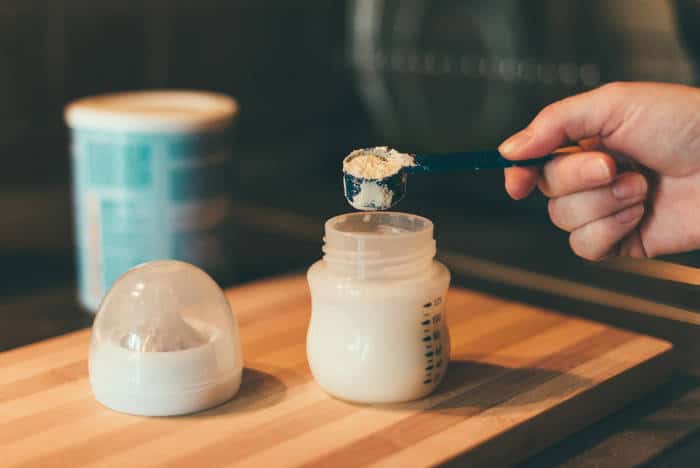
Possible increased risk of inflammatory breast conditions
Any experienced breastfeeder can speak to how uncomfortable these conditions can be (and they can come on quickly). If you aren’t taking care to express milk, you run the risk of developing these painful ailments.
Blocked ducts are typically localized to one area of the breast. They lead to pain in a concentrated area and sometimes reddened skin. If left untreated, they can become infected.
Mastitis, on the other hand, is more widespread and is due to untreated blocked duct or a build-up of milk within the breast. In addition to breast pain, you can develop swelling, body aches, fever, and flu-like symptoms.
Long stretches of not nursing can contribute to recurring symptoms and need for treatment. Therefore, it’s best to ensure proper milk expression if you’re planning to utilize combination or mixed feeding.
Nipple confusion
This refers to the frustration an infant may experience when trying to transition back and forth from the breast to the bottle. Often, the bottle releases milk faster than the breast with less work on the baby’s part. This can lead to a baby refusing the breast after growing accustomed to the bottle.
On the other hand, a baby may struggle to go to the bottle after several days of exclusive breastfeeding (say, for example, you have a week off from work and then have to go back). Therefore, if your baby experiences nipple confusion, it could be an ongoing battle for as long as you use combination feeding.
Smellier poop
If you’ve only been around formula-fed babies, you may be saying “isn’t all poop pretty smelly?”
Breastfeeding moms will be the first to tell you that it’s definitely not. Breast Milk stools often lack smell altogether or actually have a sweet, vanilla-ish scent. Feeding your baby formula, in contrast, leads to harsher smelling diapers.
Often, the extra iron in the formula can lead to constipation issues as well. Most stools from formula are consistently more solid than the loose stool of a breastfed baby.

Breast milk to Formula Ratio!
If you’re planning to introduce formula, do so slowly after your latch has been established to reduce the risk of nipple confusion. It could be a good idea to offer formula during or after a normal breastfeeding session. Also, implementing a bottle of formula before bedtime can be helpful.
By only offering formula for one to two feeds, you also decrease your need to pump to maintain your breast milk supply.
Which formula?
Breastfeeding experts have outlined nutrients to look for in a supplementation formula. These include: DHA/ARA, probiotics/probiotics, choline/taurine/lutein, nucleotides, iron, and sweeteners. These help keep the nutritional content as similar as possible to breast milk.
Some top picks for breast milk-like formula include Enfamil Enspire, Gerber Good Start Gentle Infant Formula, Earth’s Best Organic Infant Formula, Similac Pro-Advance, and Plum Organics Infant Formula.
However, it will take careful observation to discern your infant’s personal digestive needs. Some infants need a dairy-based or soy-based formula. Be careful to watch for symptoms of digestive upset or allergies.
What will I need?
Typically, you will need a powder or liquid formula, bottles, spare nipples, and bottle brushes for cleaning.
With all that kit in mind you might want to checkout these articles:
- The best baby bottles overall or maybe best baby bottles for colic?
- To keep things clean, the best bottle sterilizer and there are some interesting designs now in best bottle brushes
When should I start?
If you’re not using combination feeding to bolster nutrition due to a severe lack in supply, it’s best to wait until breastfeeding is firmly established at around 6 weeks of age.
However, with the support of your pediatrician or lactation counselor you can probably introduce a bottle earlier as long as you take care to maintain and build your supply.
How to make it work
Introduce formula slowly, maybe just one bottle a day. Try to continue consistently breastfeeding and taking note of your supply if you’re pumping.
Responsive feeding can also be a good idea as breastfed babies don’t follow a set schedule for feeding like exclusively formula-fed babies (remember breast milk doesn’t digest at the same speed as formula).
Most of all, be observant of your baby’s temperament and any changes that may arise. These are important clues into what’s going on in their tiny tummies and can help you gauge what adjustments need to be made.
Seek medical help if needed and don’t fret over not being able to breastfeed exclusively. Fed is best and your sanity matters!
Can you easily switch back to breastfeeding only?
Yes! While it may take time and effort to rebuild a substantial milk supply, you can achieve this through increased feeds, pumping, and lots of skin-to-skin contact. If your supply has decreased greatly, be sure to transition back slowly so you don’t deprive your baby of calories and nutrition.



